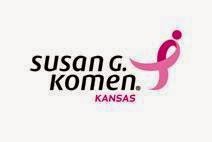Guest post by Meredith K. Parks, JD, Komen Advocate in Science, and Molly Johnson, Public Policy Coordinator

Susan G. Komen® is committed to ending breast cancer forever by empowering people and energizing science to find cures, and has been dedicated to funding breast cancer research – investing more than $800 million – since our inception in 1982. However, Komen cannot fund the fight alone. This is why on September 18 we joined over 170 supporting organizations, represented by nearly 300 participants, in Washington DC to attend the Rally for Medical Research Hill Day. “More Progress, More Hope, More Lives” was our battle cry – a booming and passionate echo from the
Rally for Medical Research held five months earlier. Again, we urged Congress to invest in the National Institutes of Health (NIH) and to make medical research a national priority. On that day, armed with hearty statistics and compelling survivor stories, we met with Congressional staff members, to plead our case.
First, the bad news: breast cancer continues to kill 40,000 mothers, daughters, sisters, and wives each year, and approximately 465 men. It kills more women in the United States than any cancer except lung cancer. This year an estimated 227,000 new breast cancer cases will be diagnosed. Despite those staggering statistics, the National Cancer Institute (NCI) at NIH has been forced to REDUCE funding for breast cancer research by nearly $30 million over the past three years alone. To further complicate this problem, breast cancer care isn’t cheap. It is critical that we protect and prioritize investments in the NIH to see outcomes of the promising work emerging from current funding. Breast cancer research has already delivered a number of important clinical advances including new therapeutics, improved screening and patient quality of life. But there is much more to be done, now is not the time to cut back.
Here is the good news: many Congressional offices AGREED with our plea and echoed our concern. This was shown again during recent budget debates, when members of both parties expressed their commitment to NIH. Francis Collins, physician-geneticist noted for his discoveries of disease genes and current NIH director, has often said “Medical research has, throughout many changes of parties, remained as one of the shining lights of bipartisan agreement, that people are concerned about health for themselves, for their families, for their constituents.”
So where do we go from here? Susan G. Komen is committed. Members of Congress are committed. Unfortunately, as we learned in the recent government shut down, a common goal does not necessarily guarantee an uncomplicated or productive means to that end. We need to send a message that government spending on breast cancer research is crucial and necessary so we don’t lose any more women or men to this disease. NIH funding has been unable to fully meet scientific need or keep up with inflation for years. After last year’s first automatic sequestration cut the NIH budget dropped to below $29 billion for the first time since 2008, the budget has been cut by 23 percent over the last decade when accounting for inflation. Unless Congress is able to come to an agreement, the second round of sequestration cuts are scheduled to begin January 15 and will be even more devastating for cancer patients, researchers, and your local economy. NIH funding supports 325,000 researchers at more than 3000 universities, medical schools and research institutions in every state and around the world. In 2010 alone, the federal investment in NIH research had a 150 percent multiplier effect on the economy – leading to the creation of 484,939 jobs and generating $69 billion in new economic activity across the U.S.
We are all stakeholders in this cause and must continue to contact our legislators and request that they make cancer research and biomedical science funding a national priority. Your elected officials are in D.C. to represent your concerns, so join the chorus, and make sure your voice is heard!
More Progress. More Hope. More Lives!



